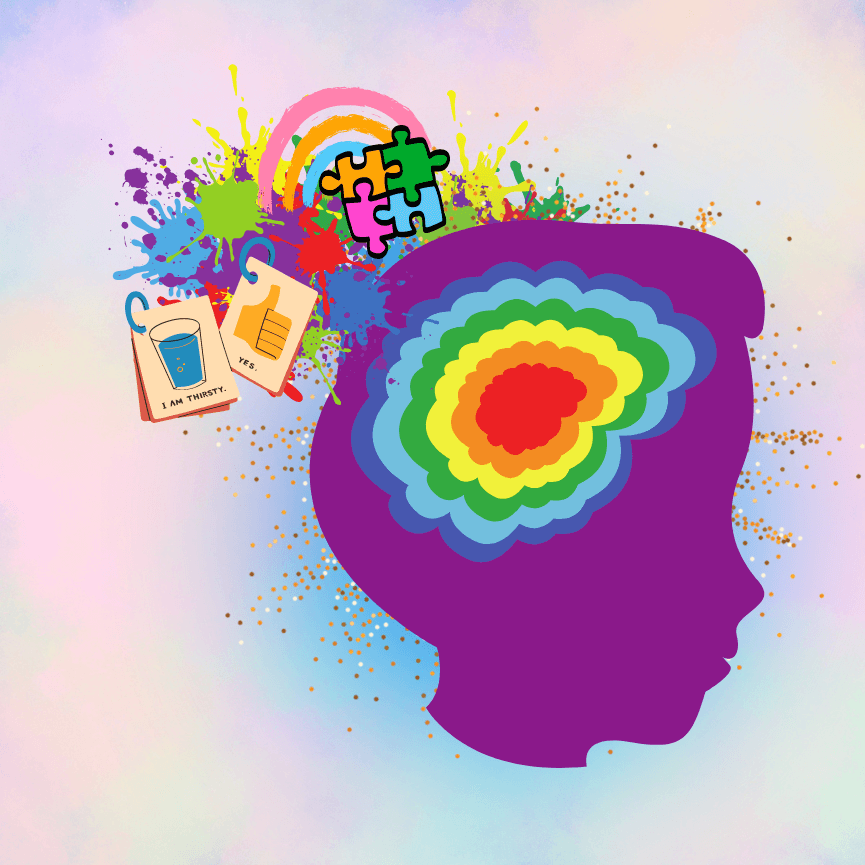
- Sep 23, 2024
- 78 Views
- 0 Comments
Thinking In Pictures: Autism, Sensory Processing & Solutions
Understanding Autism: Thinking in Pictures and Sensory Processing Challenges
Autism Spectrum Disorder (ASD) is a neurodevelopmental condition that affects how individuals perceive and interact with the world. One key characteristic of autism is the way many autistic individuals experience and process sensory information differently than neurotypical people. Sensory processing issues, often referred to as Sensory Processing Disorder (SPD), are common in those with autism and can lead to discomfort, anxiety, or even meltdowns in certain environments. Another fascinating aspect of autism is the concept of "thinking in pictures," a term coined by Dr. Temple Grandin, an autistic advocate and professor. This article will delve into the intersection of visual thinking and sensory problems in individuals with autism.
What is “Thinking in Pictures”?
The Visual Thought Process in Autistic Individuals
Thinking in pictures refers to the way many autistic individuals process information visually rather than through words. Unlike neurotypical people, who may think in a combination of words and abstract ideas, autistic individuals often rely heavily on images, scenes, and detailed visual representations when navigating their thoughts. For some, this ability to think visually enhances their problem-solving and creativity.
Temple Grandin’s Contributions to Understanding Thinking in Pictures
Temple Grandin, one of the most well-known advocates for individuals with autism, describes her experience of thinking in pictures in her book Thinking in Pictures. She shares how her ability to think in detailed images allowed her to excel in designing livestock handling facilities. Her insights have brought greater understanding to how visual thinkers process and interpret the world differently.
Understanding Sensory Processing Issues in Autism
Common Sensory Challenges Faced by Autistic Individuals
Many autistic individuals experience heightened or diminished sensitivity to sensory stimuli. These challenges often affect how they react to their surroundings, making simple activities like going to a grocery store or attending a birthday party overwhelming. Sensory problems can manifest in various ways, such as sensitivity to loud noises, bright lights, certain textures, or even specific tastes and smells.
Sensory Overload and Sensory Avoidance
Sensory overload occurs when an individual’s senses are bombarded with too much information, causing them to feel overwhelmed and anxious. On the other hand, sensory avoidance is a coping mechanism where individuals might withdraw from situations that provoke intense sensory input. Both conditions are prevalent among those with autism and can significantly impact their daily life.
The Connection Between Thinking in Pictures and Sensory Problems
How Visual Thinking Impacts Sensory Perception
Visual thinkers with autism often interpret sensory information through a different lens. Because they process stimuli more vividly through images, a noisy or visually cluttered environment may be more overwhelming to them than it would be to someone who does not rely as heavily on visual input. This vivid processing of stimuli can exacerbate sensory overload.
Coping Mechanisms for Sensory Overload Through Visual Thinking
For some autistic individuals, thinking in pictures can serve as a coping mechanism for sensory overload. By focusing on visual images or retreating into their inner world of detailed scenes, they can manage the overwhelming sensory input. These coping mechanisms, however, can also lead to social withdrawal.
Sensory Processing Disorder (SPD) and Its Role in Autism
The Neurological Basis of SPD in Autism
Sensory Processing Disorder is often closely linked to autism, although not all autistic individuals have SPD, and not all people with SPD are autistic. The neurological basis of SPD lies in how the brain processes sensory information. In individuals with autism, the brain may struggle to filter and prioritize sensory stimuli, leading to exaggerated responses.
How SPD Differs from Typical Sensory Reactions
While everyone experiences occasional sensory discomfort (like getting startled by a loud noise), people with SPD experience these reactions more frequently and intensely. The brain’s inability to regulate sensory input can make everyday environments feel unpredictable and uncomfortable.
Types of Sensory Processing Problems in Autism
Hypersensitivity vs. Hyposensitivity
In autism, sensory challenges typically fall into two categories: hypersensitivity (over-responsiveness) and hyposensitivity (under-responsiveness). Hypersensitive individuals may find everyday stimuli, such as fluorescent lights or clothing tags, unbearable, while hyposensitive individuals may seek out sensory input by touching or spinning objects.
Auditory, Visual, and Tactile Sensitivities
Sensory sensitivities can affect multiple senses, including hearing, sight, and touch. For instance, loud sounds may trigger meltdowns in hypersensitive individuals, while visual thinkers may struggle with environments that are too visually stimulating. Tactile sensitivities often involve discomfort with certain fabrics or skin contact.
The Role of Sensory Integration Therapy
Benefits of Sensory Integration Therapy for Autistic Children
Sensory integration therapy aims to help individuals with autism manage their sensory processing challenges by gradually exposing them to controlled sensory input. This type of therapy can improve motor skills, social interaction, and overall comfort in navigating the world.
Techniques Used to Manage Sensory Problems
Therapists use various techniques, such as brushing therapy, swinging, and weighted blankets, to help individuals regulate their sensory input. The goal is to desensitize them to overwhelming stimuli and teach them how to cope in a calm and controlled manner.
Managing Sensory Overload in Daily Life
Practical Tips for Parents and Caregivers
Parents and caregivers can play a vital role in helping autistic individuals manage sensory overload. Some tips include creating structured routines, using noise-canceling headphones, and offering quiet spaces for decompression. Being mindful of potential triggers can significantly reduce stress for both the individual and their caregivers.
Tools and Devices That Help with Sensory Issues
There are many tools available to help manage sensory problems, including fidget toys, sensory-friendly clothing, weighted blankets, and visual aids. These items can provide comfort and help regulate sensory input, making daily activities more manageable.
How Parents Can Support Visual Thinkers
Encouraging Strengths in Visual Thinking
Visual thinking can be a powerful tool. Parents can nurture this strength by encouraging activities like drawing, building, and problem-solving using visual aids. Supporting these abilities can boost confidence and help autistic individuals succeed in school and life.
Helping Children Navigate Sensory Challenges
Parents can help their children navigate sensory issues by identifying triggers and working with therapists to develop coping strategies. Open communication, patience, and understanding are key to helping children feel safe and supported.
The Importance of Creating Sensory-Friendly Environments
Designing Autism-Friendly Homes and Schools
Creating sensory-friendly spaces involves minimizing overwhelming stimuli and providing areas for sensory breaks. Soft lighting, quiet rooms, and designated sensory corners can make homes and classrooms more comfortable for individuals with autism.
The Role of Assistive Technology in Sensory Processing
Assistive technology, such as visual schedules or apps that aid in communication, can be incredibly beneficial for autistic individuals. These tools help structure their day and reduce anxiety related to unpredictable sensory environments.
Personal Stories and Insights from Visual Thinkers with Autism
Overcoming Sensory Challenges through Visual Strategies
Many visual thinkers with autism have shared their stories of how they use imagery and visualization to manage their sensory challenges. These personal insights offer valuable lessons on the importance of embracing visual thinking and finding ways to navigate the sensory world.
Thinking in pictures and sensory processing issues are deeply intertwined in the lives of many autistic individuals. Understanding the connection between visual thinking and sensory challenges can help parents, caregivers, and professionals create more supportive environments for those on the spectrum. By embracing their strengths and providing the right tools and therapies, we can empower autistic individuals to thrive despite the sensory difficulties they may face.



Comments - 0 comments till now